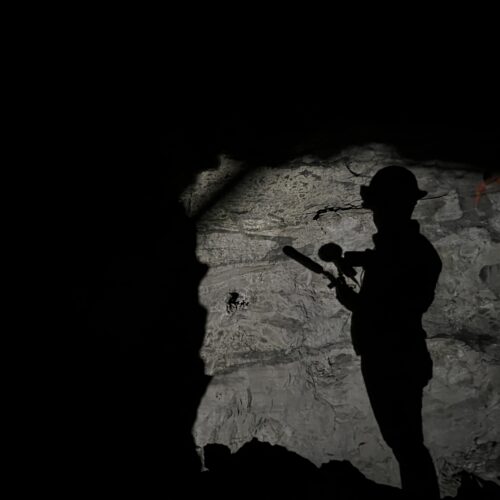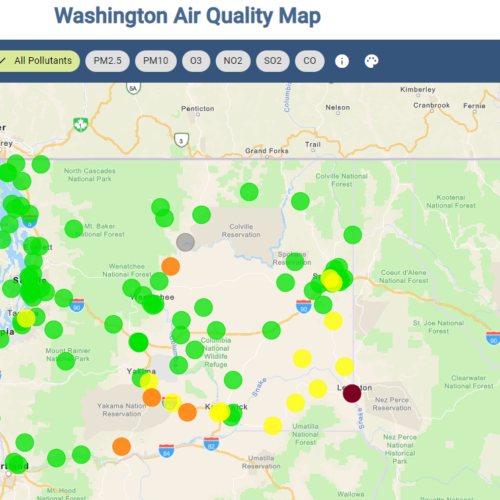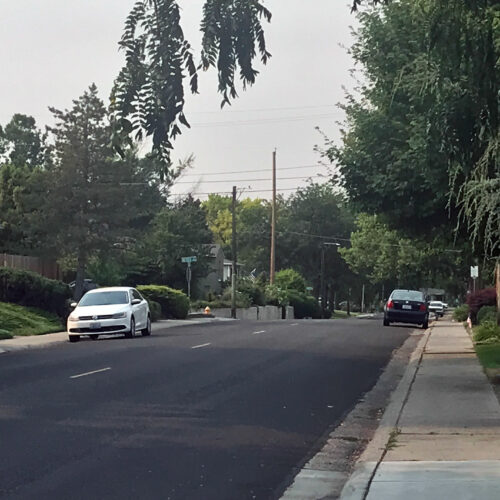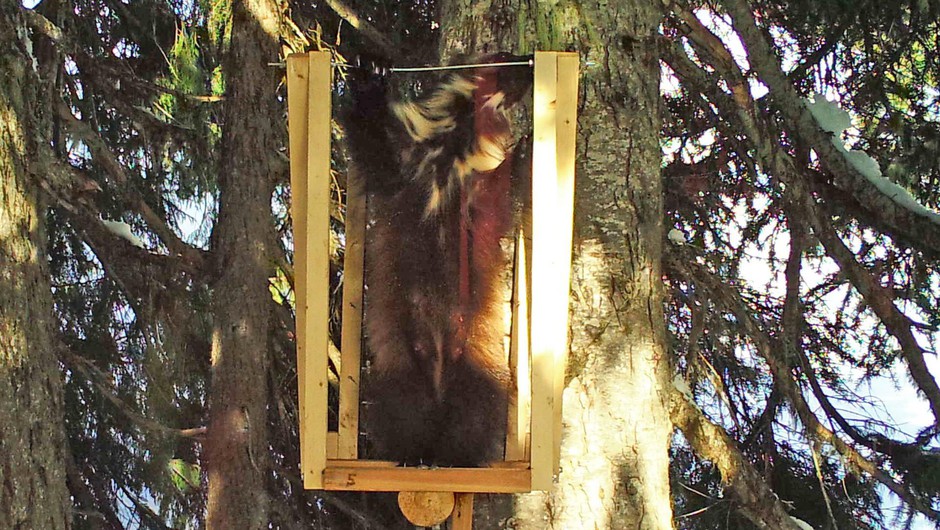
Rare Find: Wolverine Mother In Washington’s South Cascades
For the first time in recent history, a mother wolverine has been spotted in the southern part of Washington’s Cascade Mountains. The carnivores had been wiped out of the region after excessive hunting and trapping in the mid-1900s.
A female wolverine was first spotted in Washington’s southern Cascade Mountains two years ago. Wolverines look like small bears with bushy tails.
Since then, biologists were able to collect some of her DNA from hair samples.
This spring, they snapped a picture at a special wolverine monitoring station. That picture was able to show that she might have kits.
“It’s a good sign that wolverines are expanding their distribution in Washington,” said Jocelyn Akins, the conservation director with the Cascades Carnivore Project.
Biologists can identify individual wolverines from the unique patterns on their neck and chest. The site where they took the photos is so remote biologists couldn’t make it back out in a day.
Akins said biologists have also found the mother’s den — at the base of a very large boulder near the tree line. Wolverines burrow into the snowpack to build their dens.
“We hope that we’ll be able to see the kits come out of their den as the late spring progresses,” Akins said.
They estimate the kits are 9- or 10-weeks-old right now. The group will monitor the den with a remote camera.
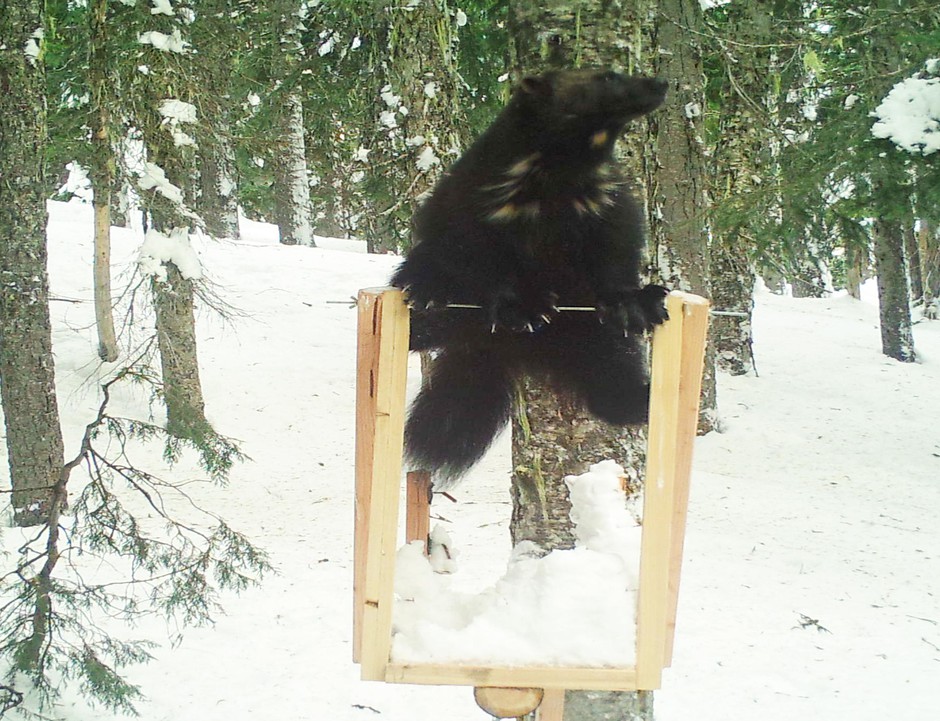
An unknown male wolverine was spotted at a wildlife monitoring station. Courtesy of the Cascades Carnivore Project
Wolverines are candidates to be threatened species in Washington and are considered threatened in Oregon.
They traveled down from Canada and re-established habitat in the North Cascades. In northeastern Oregon a wolverine was recently found in the Wallowa Mountains.
Wolverines depend on ecologically fragile, snowy habitat, which is threatened by climate change.
Akins said wolverines are solitary and need a large areas to roam. These kits, which were found south of Interstate 90, could have a lot of distance to cover later in life.
“Unless there’s other wolverines south of I-90, they’re going to have to travel quite a distance to find a mate. So you can imagine the potential sources of mortality that would occur: the highways and vehicle collisions,” Akins said.
That’s one reason the wildlife overpasses on I-90 are important, she said, to connect the southern and northern Cascades.
This wolverine mother was the 37th wolverine documented in Washington. Biologists from the Yakama Nation found a male wolverine on the eastern slopes of Mount Adams in 2006. He also roamed up into the Goat Rocks Wilderness.
“The fact that wolverines are slowly making their way into southern Washington highlights how important connectivity is,” Akins said.
Copyright 2018 Earthfix
Related Stories:
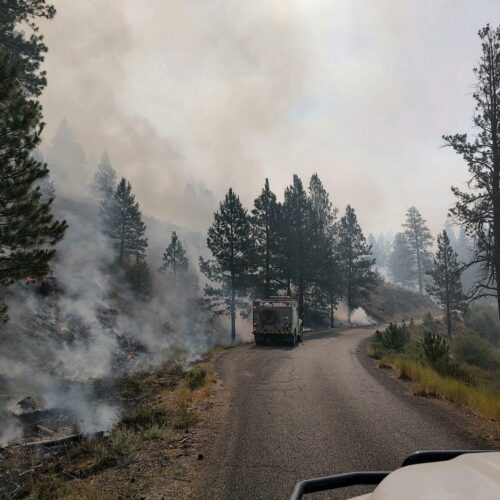
Around the Northwest, hot, dry, windy weather fuels fires
Dry, hot and windy conditions have communities on alert for wildfire danger across the Pacific Northwest. Those conditions propelled fire growth over the weekend, and more of the same weather is expected this week.
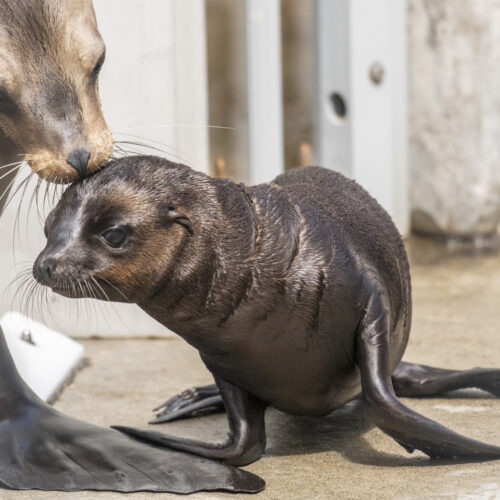
A sea lion pup joins Point Defiance Zoo & Aquarium
The Point Defiance Zoo & Aquarium welcomed a new member into its marine family last month: a California sea lion pup.
Already, Pepper is a spicy and playful pup, said Jen DeGroot, curator of marine mammals and birds at the zoo.

In green energy boom, one federal agency made the Yakama Nation an offer they had to refuse
Elaine Harvey, Jeremy Takala, Simone Anter. J.D. Reeves/High Country News Read B. ‘Toastie’ Oaster | High Country News This story was originally published by High Country News. When Yakima Nation leaders




